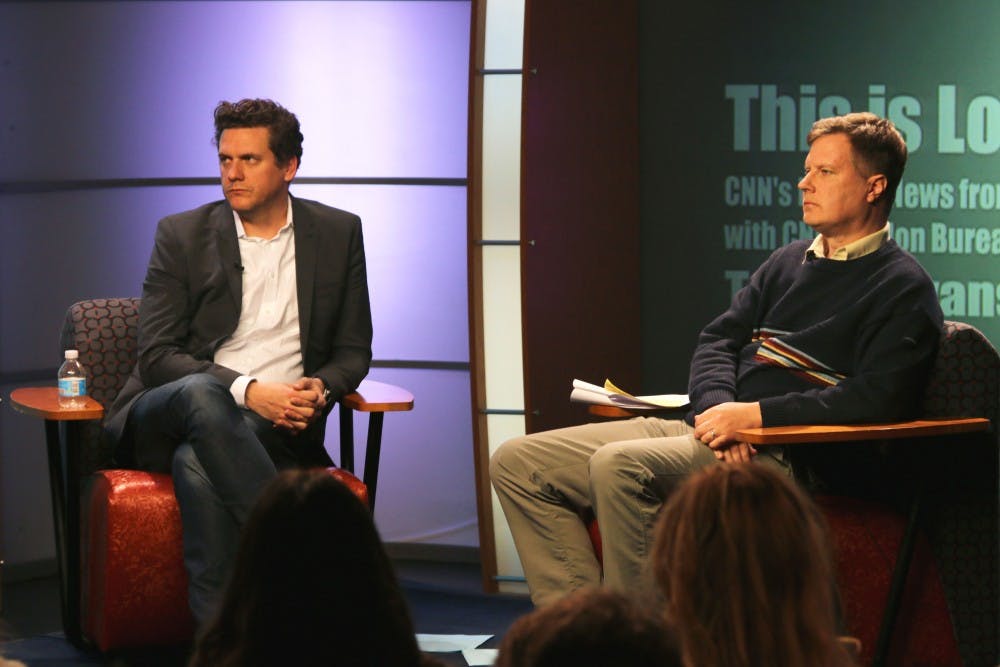When Tommy Evans first began his career in journalism, he was just trying to get by in New York. He freelanced in order to pay the rent.
Evans majored in political science and studio arts at the University of Rochester and earned a master's in international politics at the University of London. But journalism, Evans said, is addictive.
Today, Evans is the current vice president and London bureau chief of CNN. He oversees all newsgathering for Europe, the Middle East and Africa.
Evans spoke at Miami University on Monday evening in a Q&A on CNN's role in news from abroad, moderated by Joe Sampson, senior clinical faculty in the Media, Journalism and Film department.
"I grew up overseas," Evans said. "My family lived in Asia for most of my childhood, but international news is fascinating. I like different people; I love different cultures; I like to travel ... I like telling people stories, and it's amazing how often conflicts can be broken down just when people get to know each other."
International news, he said, is also a lot of fun.
"You get to go to crazy places and see crazy things," Evans said. "It's frighteningly addicting."
Evans also talked about the logistical challenges of working in international news, especially in Africa. In one instance, he pulled a correspondent from Rio to cover a story in Lagos because it's one of the closest international cities.
"You have to think about the world in a different way," he said. "If you want to get into international news, geography will be your best friend."
Throughout the talk, five short clips from some of the biggest recent stories from CNN's international operations were shown, ranging from a rescue mission of survivors of an ISIS attack in Syria to the London Grenfell Tower fire.
Reporters in some of the videos were in life-threatening situations in high-risk areas of the world.
One of the toughest stories to get people to cover was the Ebola epidemic.
"Bullets and bombs you can get your head around," Evans said. "But the Ebola virus was this invisible thing. It was really really frightening."
He added that a reporter would never be forced to cover a story in a dangerous area but that plenty of reporters volunteer to head to places such as Iraq or Libya.
"No story is worth dying for," Evans said.
davisa10@miamioh.edu

